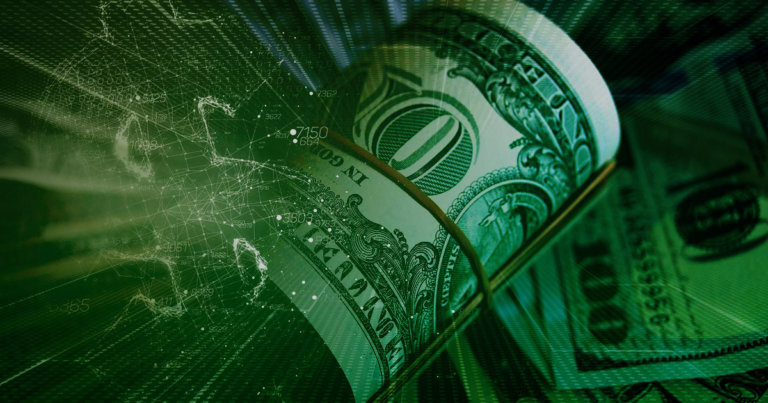 The U.S. already have a CBDC, just skip the “CB”
The U.S. already have a CBDC, just skip the “CB” The U.S. already have a CBDC, just skip the “CB”
Let the private sector come up with a solution to the CBDC dilemma. Maybe you heard it before, but the U.S. already has a, or rather several, digital dollars. They’re called stablecoins, and all the U.S. government basically has to do, to leapfrog China, is to say okay.

Cover art/illustration via CryptoSlate. Image includes combined content which may include AI-generated content.
Few product announcements have stirred such activities among governments around the world as the then Facebook’s, now Meta’s, announcement of the then Libra, now the dead Diem, announcement. The prospects of having a private company with billions of users issue money was just too much for legislators. All of the sudden, everyone was planning a so-called CBDC or Central Bank Digital Currency.
Now, in most parts of the modern world, we already have digital money, a fact often told to us by nocoiners. Just open your banking app and glean at those numbers representing ones and zeros of money on your screen. So what’s the deal with CBDCs? To be honest, I don’t know, except, perhaps, as a surveillance tool, if we would ditch physical banknotes in the process.
The issue of having people use money not controlled by the government
What seems troubling for lawmakers and many others is the risk, or opportunity, depending on your viewpoint, of having people use money that is not under the control of the government, and they seem to have this idea that the reason why many people would prefer the new alternative is because they’re easier and faster to use, and in some cases cryptocurrencies are. But not always.
The thinking of lawmakers seems to go along the lines of “if people are going to use these new forms of money, and we essentially can’t stop this from happening, then we have to come up with our own version of digital money.”
This reminds me of how Microsoft once dismissed the Internet, then made a 180° turn, and came up with the worst web browser the world had ever seen and tried to change web standards in the process. Luckily, the open Internet stood tall.
In the same way, I don’t think CBDC are gmi, because no matter how you twist and turn, CBDC are not going to have the same properties and characteristics as open, permissionless cryptocurrencies. If they for some reason would, then CBDCs would essentially be the same as what we already have: Stablecoins running on open and permissionless blockchains. An open protocol is simply better than any attempt to alter its openness.
The U.S. is way behind China on CBDCs
Zooming out and looking at the geopolitical stage, China is way ahead of the U.S. in the race for a CBDC; they already have it. A digital dollar is years from now. All the U.S. has managed to develop so far is two reports – one coming out of the Fed, and the other from MIT in a clinch with the Boston Fed. Unless, of course, you change the definition of what a CBDC is or can be.
On Tuesday the 15th of February, Congressman Josh Gotthiemer (NJ-5) released a discussion draft of the Stablecoin Innovation and Protection Act of 2022. As per the announcement, this would be “legislation focused on defining qualified stablecoins, carving qualified stablecoins out from more volatile cryptocurrencies, and putting appropriate protections in place for consumers and investors.” Good boy!
The proposed bill would let both traditional banks and non-bank entities issue “qualified stablecoins”, and have the Office of the Comptroller of the Currency (OCC) rip the guts out of any entity that doesn’t follow some intended guidelines of how these stablecoins must be 100% backed, whether it’s with cash, cash equivalents or whatever is deemed solid enough. Moreover, the proposed bill suggests that the Federal Deposit Insurance Corporation (FDIC) put up an insurance fund to protect non-bank issuers just in case the monetary feces hit the fan.
In the slightly more polite wordings of Congressman Gotthiemer “, the legislation provides the Office of the Comptroller of the Currency (OCC) with primary oversight authority over both types of stablecoin issuers. To help further protect consumers, the Federal Deposit Insurance Corporation (FDIC) will be required to develop a Qualified Stablecoin Insurance Fund to manage the insurance of redemption payments of non-bank issuers.”
“Qualified stablecoins” would be exempt from regulation as securities
Another key part of the language of the proposed bill is that the bill “does not restrict the issuance of other types of cryptocurrencies. The Securities and Exchange Commission (SEC) and the Commodities Futures Trading Commission (CFTC) are also not restricted from examining non-qualified stablecoins and other cryptocurrencies as potentially being securities and derivatives.”
This means qualified stablecoins would be exempt from regulation as securities by the SEC or derivatives by the CFTC, and Goldman Gary is still free to pursue his mission to make himself a pariah in the future economy. This also means that, for instance, the algorithmic stablecoin DAI is named into the first-class lounge of “qualified stablecoins.” But hey, nor does it need to.
The proposed bill is most welcomed by several renowned and knowledgeable people in the space, most notably, for me at least, Jake Chervinsky Head of Policy at the Blockchain Association, who tweets:
“There’s a ton of action in Congress on stablecoin regulation right now and [Congressman Josh Gotthiemer] just proposed a draft bill with the best language we’ve seen yet. If Congress does anything on crypto this year, it may look like this. Congress is working on a bunch of crypto-related policy issues now, but stablecoins are a top priority. [Gotthiemer’s] draft bill published yesterday, not only the best we’ve seen, but quite good.”
“The opt-in model is important for DeFi stablecoins”
Also, according to Chervinsky, the proposed bill uses an opt-in model, so issuers who want to take advantage of it can, but none are forced to. The opt-in model is important for DeFi stablecoins that use crypto-collateralized or algorithmic mechanisms, which would be unaffected.
Let’s say this language makes it into law, then what’s with an American CBDC? Well, what does the U.S. want? Above all, the U.S. of A. wants to preserve the world order in which the dollar is the reserve currency. But will the U.S. be able to maintain this order, CBDC or not? I don’t think so. China, Russia, and other big nations and trading partners simply don’t want to deal in U.S. dollars. They have every reason not to. It’s gonna be hard to force them.
In a recent episode of “The what Bitcoin did” podcast with Peter McCormack, featuring Eric Yakes, author of the book “The 7th Property: Bitcoin and the Monetary Revolution”, Yakes says (citing a WSJ article) that the share of global trade conducted using dollars declined from 80% in 2019 to 56% today. That’s a huge decline in just a couple of years.
Who wants stablecoins on Swift?
So, if the U.S. wants to protect its position, what can it do? Here’s my, and many others humble suggestion: Enact this bill, and others that create clarity and bolsters innovation around stablecoins and other cryptocurrencies, ditch the CBDC, and trust the trustlessness of open, permissionless, and global blockchains, an American invention, by the way, for all we know. And voilá, you have a CBDC without the CB. It will be digital dollars in the true sense, free to move and be traded with around the world.
Are there any downsides? Well, the U.S. will control the issuance but not the transactions given the coins are issued on open networks like Bitcoin and Ethereum. If they’re not, then we’re back to square one. Who wants stablecoins on Swift? But just like Center and Tether can block addresses holding USDC and USDT respectively, so can the U.S. government force issuers to freeze wallets if needed.
Will this happen? Not if we’re waiting for legislators to push the button; they never will. But if the U.S. opens up to “qualified stablecoins” then it might de facto happen anyway. Just as the Internet just happened, and just as cryptocurrencies … just happened. Basically, all the innovation in the banking and finance sector over the past hundred years has come from the U.S. private sector. Then why on earth wouldn’t this financial innovation?











































































































